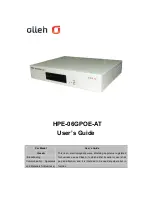
- 48 -
MODBUS-RTU PROTOCOL
The MODBUS-RTU protocol allows the management of the reading and writing of the following
registries according to the specifications found on the reference document for this
Modicon
PI-MBUS-300
standard
.
To select the MODBUS-RTU communication see
SERIAL COMMUNICATION SETTINGS
section.
Check if the
master
MODBUS-RTU in use (or the development tool) requires the disclosure of
registers based on 40001 or 0. In the first case the registers numbering corresponds to the one in
the table; in the second case the register must be determined as the value in the table minus 40001.
E.g.: the register 40028 shall be reported as 27 (= 40028-40001).
Certain data, when specifically indicated, will be written directly in the EEPROM type memory. This
memory has a limited number of writing operations (100000), therefore it is necessary to pay
particular attention to not execute useless operations on said locations. The instrument in any case
makes sure that no writing occurs if the value to be memorised is equal to the value in memory.
The numerical data found below are expressed in decimal notation; if the prefix 0x is entered the
notation will be hexadecimal.
MODBUS-RTU DATA FORMAT
The data received and transmitted by way of the MODBUS-RTU protocol have the following
characteristics:
-
1 start bit
-
8 bit of data,
least significant bit
sent first
-
Settable parity bit
-
Settable stop bit
FUNCTIONS SUPPORTED IN MODBUS
Among the commands available in the MODBUS-RTU protocol, only the following are utilised for
management of communication with the instruments; other commands could be incorrectly
interpreted and generate errors or blocks of the system:
FUNCTIONS
DESCRIPTION
03 (0x03)
READ HOLDING REGISTER (READ PROGRAMMABLE REGISTERS)
16 (0x10)
PRESET MULTIPLE REGISTERS (WRITE MULTIPLE REGISTERS)
Interrogation frequency is linked to the communication speed set (the instrument stands by for at
least 3 bytes before starting calculations an eventual response to the interrogation query). The
parameter present in the
SERIAL COMMUNICATION SETTING
section, allows the
instrument to respond with a further delay and this directly influences the number of interrogations
possible in the unit of time.
















































